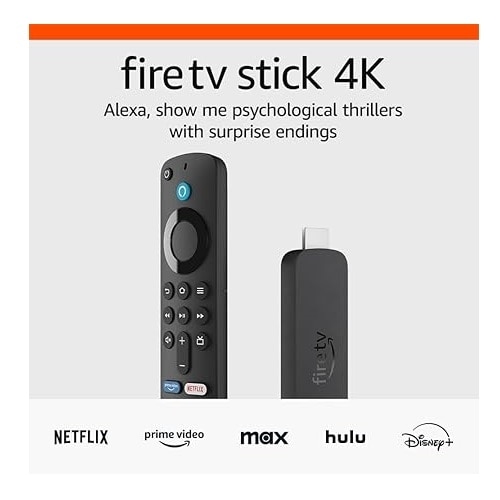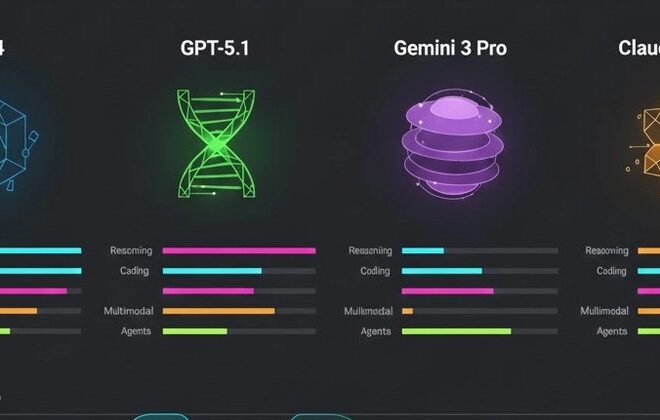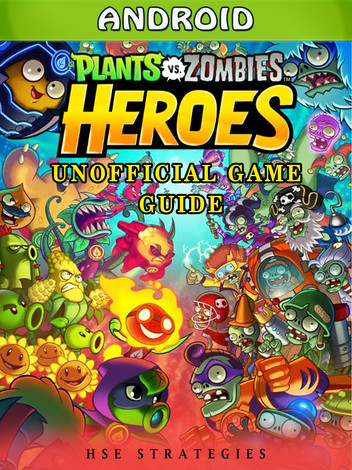
5G on Android: More Than Just Speed – Your Ultimate Guide to the Next-Gen Experience
For years, the world of Android News has been buzzing with a single, powerful acronym: 5G. It’s been heralded as a revolution, a quantum leap in mobile technology that promises to reshape how we interact with our digital world. Every new flagship and even many mid-range Android Phones now proudly display the 5G logo on their boxes and boot-up screens. But beyond the hype and the impressive speed test screenshots shared on social media, what does 5G actually mean for you, the everyday Android user? The reality is far more nuanced and exciting than just faster movie downloads.
This isn’t just about making your current apps run a little quicker. 5G is a foundational technology designed to unlock entirely new experiences, transforming your smartphone from a simple communication device into a powerful hub for cloud computing, augmented reality, and a universe of interconnected Android Gadgets. This article will cut through the technical jargon and marketing speak to provide a comprehensive look at the 5G landscape on Android. We’ll explore the different types of 5G, uncover the real-world applications that are finally emerging, address the practical concerns like battery life, and give you the actionable insights you need to make the most of this next-generation network.
Deconstructing the 5G Promise: Beyond Raw Speed
When carriers market 5G, they almost exclusively focus on one metric: speed. While the jump in download and upload speeds is significant, it’s only one-third of the story. To truly understand 5G’s potential, we need to look at its three core pillars, each of which will fundamentally change how our Android phones operate.
eMBB (Enhanced Mobile Broadband): The Speed You Know
This is the most straightforward and widely advertised benefit. eMBB is all about delivering massive bandwidth and multi-gigabit speeds. Think of it as upgrading your home internet from a decent cable connection to a top-tier fiber optic line, but for your phone. In the real world, this translates to:
- Instant App Downloads: Downloading a 1GB game like Genshin Impact could take seconds instead of several minutes.
- Ultra-HD Streaming: Buffering on 4K or even 8K video streams becomes a thing of the past. You can stream the highest quality content on services like Netflix or YouTube Premium without a single stutter, even in a crowded area.
- Massive File Transfers: For professionals and creators, uploading a large video project or a folder of high-resolution photos to the cloud from their phone will be as fast as doing it on a wired connection at home.
URLLC (Ultra-Reliable Low-Latency Communication): The Responsiveness You Feel
This is arguably the most transformative aspect of 5G for interactive applications. Latency, or ping, is the time it takes for a signal to travel from your device to a server and back. 4G latency is typically around 30-50 milliseconds, which is fine for browsing but noticeable in real-time applications. 5G aims to reduce this to under 5 milliseconds, and in some cases, as low as 1 millisecond. This near-instantaneous response time unlocks:
- Cloud Gaming Dominance: Services like Xbox Cloud Gaming and NVIDIA GeForce NOW become virtually indistinguishable from playing on a local console. The dreaded input lag that plagues cloud gaming on 4G disappears, making competitive online multiplayer games perfectly viable on your Android phone with a connected controller.
- Real-Time Augmented Reality (AR): Imagine pointing your phone’s camera at a city street and having information overlays appear instantly and track objects perfectly. Google’s Live View in Maps is just the beginning. With URLLC, complex, interactive AR experiences that blend seamlessly with the real world become possible.
- Connected Vehicles: Your Android Auto experience could become far more advanced, with cars communicating with each other and with city infrastructure in real-time to prevent accidents and optimize traffic flow.
mMTC (Massive Machine-Type Communications): The Connected Universe

The final pillar, mMTC, isn’t about speed or responsiveness but about connection density. 5G can support up to one million connected devices per square kilometer, a massive increase over 4G. While this sounds industrial, it has huge implications for the consumer-level ecosystem of Android Gadgets. This means your Android phone can become the central command for a truly smart home and a connected life, where dozens of devices—smartwatches, fitness trackers, smart appliances, home sensors, and more—can all communicate efficiently without congesting the network or draining their batteries.
The Two Faces of 5G: Navigating the mmWave vs. Sub-6 GHz Maze
One of the most confusing aspects of 5G for consumers is that not all 5G is created equal. The latest Android News often mentions different “bands,” and your phone might show a “5G” icon in one part of town and a “5G UW” or “5G+” icon in another. This is due to the two primary frequency spectrums used for 5G: Sub-6 GHz and millimeter Wave (mmWave).
Sub-6 GHz: The Workhorse of 5G
Think of Sub-6 GHz as the wide, reliable foundation of the 5G network. It uses frequencies below 6 GHz, which are similar to what 4G LTE currently uses. Its key characteristics are:
- Excellent Coverage: These radio waves can travel long distances and penetrate buildings, walls, and other obstacles effectively. This makes it ideal for building a broad, nationwide coverage map.
- Good Speeds: While not reaching the multi-gigabit speeds of mmWave, Sub-6 is still a significant upgrade over 4G, with typical speeds ranging from 100 to 400 Mbps. For most users, this is more than enough for a dramatically improved mobile experience.
- Universal Support: Virtually every 5G Android phone sold today supports Sub-6 GHz bands. This is the 5G you will encounter most often. T-Mobile has built the core of its leading 5G network on this spectrum.
mmWave (millimeter Wave): The Blazing-Fast Sprinter
If Sub-6 is the workhorse, mmWave is the thoroughbred racehorse. It uses much higher frequencies (typically above 24 GHz), which allows for an enormous amount of data to be transferred at incredible speeds.
- Unprecedented Speed: This is where you see the headline-grabbing speeds of over 1 Gbps, and sometimes even up to 4 Gbps. It’s fast enough to download an entire 4K movie in under a minute.
- Limited Range and Penetration: The biggest drawback of mmWave is its physics. These high-frequency signals are fragile. They can’t travel very far and are easily blocked by walls, trees, and even your own hand.
- Specific Use Cases: Because of its limitations, mmWave is deployed strategically in dense, high-traffic areas. Think sports stadiums, concert venues, airports, and crowded downtown urban cores. Verizon initially built its 5G network heavily on mmWave, branding it “5G Ultra Wideband.”
What This Means for Your Android Phone
When choosing a new device, it’s crucial to check its band support. While all 5G phones support Sub-6, mmWave support is often reserved for more expensive flagship models, and sometimes even specific carrier versions of those models. For example, a “unlocked” Google Pixel or Samsung Galaxy might not have the mmWave antennas that a Verizon-specific version does. If you live or work in an area with dense mmWave coverage, paying extra for a compatible phone could be worth it. For everyone else, a phone with robust Sub-6 support is more than sufficient.
Unlocking the Future: Real-World 5G Applications for Android
With the technical foundation laid, let’s explore the exciting applications that 5G is enabling on Android Phones and the broader ecosystem of gadgets right now and in the near future.

Case Study: The Cloud Gaming Revolution
Cloud gaming is the quintessential 5G “killer app.” Services like Xbox Cloud Gaming allow you to play AAA titles like Halo Infinite or Starfield directly on your Samsung Galaxy S24 Ultra or Google Pixel 8 Pro, with all the heavy processing done on a remote server. On 4G, this experience was often compromised by lag and stuttering. On a low-latency 5G connection, the experience is transformative. The game responds instantly to your inputs on a connected controller (like the Razer Kishi), making it feel like you have a powerful console in your pocket. You can start a game on your console at home, head out the door, and seamlessly continue your session on your Android phone while waiting for the bus.
The Dawn of Mainstream AR and VR
Augmented Reality has been a promising but niche technology for years. 5G is set to change that. The high bandwidth and low latency are critical for offloading the intense processing required for convincing AR to the cloud. This means future AR glasses could be lightweight and stylish, tethering to your 5G Android phone for processing power. Imagine walking into a supermarket and having your glasses highlight items on your shopping list, display nutritional information, and show you the best deals in real-time. This moves beyond a phone screen and integrates digital information directly into your field of view.
The Truly Smart, Connected Home
The mMTC pillar of 5G will supercharge the Internet of Things (IoT). Your Android phone, acting as the hub, will be able to reliably manage a vast network of Android Gadgets and smart home devices. This isn’t just about turning lights on and off. It’s about a home where your smart thermostat, security cameras, smart appliances, and even your car are in constant, low-power communication. Your phone will provide a seamless interface to this ecosystem, whether you’re at home or miles away, with a connection that is far more robust and scalable than your current home Wi-Fi.
The 5G Buyer’s Guide: Is It Worth the Hype (and the Battery Drain)?
Now for the practical considerations. You’re in the market for a new Android phone. Should 5G be a top priority? And what are the downsides?
Best Practices and Actionable Tips
- Check Your Local Coverage: Before you invest in a premium mmWave-capable phone, check the coverage maps from carriers like Verizon, AT&T, and T-Mobile. If you don’t live or work in a dense urban core, you’ll likely be on Sub-6 most of the time, meaning a more affordable 5G phone will serve you just as well.
- Understand the Battery Impact: This is a common pitfall. In the early days, 5G radios were a significant drain on battery life. While this has improved dramatically, connecting to 5G still uses more power than 4G LTE. Most modern Android Phones have a feature called “Adaptive Connectivity” or similar, which intelligently switches between 4G and 5G to save power. It’s a good idea to keep this enabled. If you’re in an area with a weak 5G signal, your phone will use even more power trying to maintain a connection. In these cases, it can be wise to manually switch to “LTE Only” in your network settings to preserve battery.
- Do You Need a Flagship?: The good news is that 5G is no longer a premium-only feature. Excellent mid-range phones like the Google Pixel “a” series and Samsung’s Galaxy “A” series offer fantastic 5G performance for everyday tasks. You don’t need to spend over $1000 to get a great 5G experience.
- Look Beyond the Phone: Consider your other gadgets. If you plan on using a 5G-enabled tablet or laptop, or want to use your phone’s mobile hotspot as a primary internet source for other devices, then investing in a phone with the latest 5G capabilities and a corresponding data plan makes a lot of sense.
Conclusion: A Platform for Tomorrow, Ready Today
5G on Android has finally moved beyond a marketing buzzword and into a genuinely impactful technology. It is far more than an incremental speed bump; it is a multi-faceted upgrade that enhances responsiveness, capacity, and speed in equal measure. While the revolutionary applications like mainstream AR are still on the horizon, the foundational benefits are here today. From flawless 4K streaming and console-quality cloud gaming to the potential for a truly interconnected life powered by a universe of Android Gadgets, 5G is the bedrock upon which the next decade of mobile innovation will be built.
For consumers today, the key is to make an informed choice. Understand the difference between Sub-6 and mmWave, check the coverage in your area, and be mindful of the battery trade-offs. By doing so, you can ensure your next Android phone is not just a device for today, but a powerful portal to the exciting, connected future that 5G promises.



